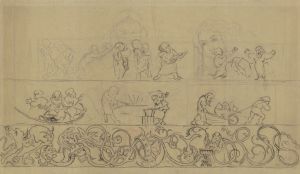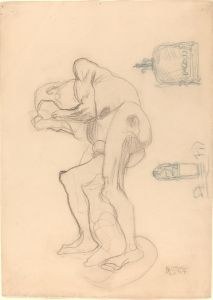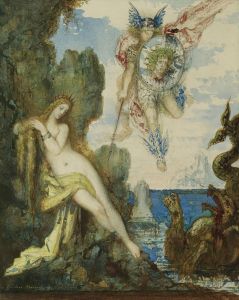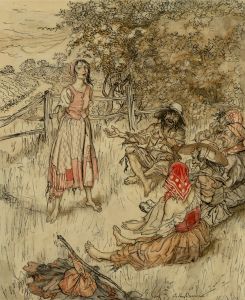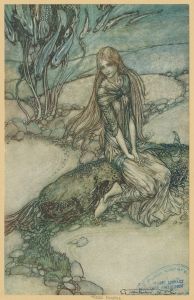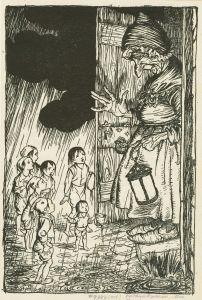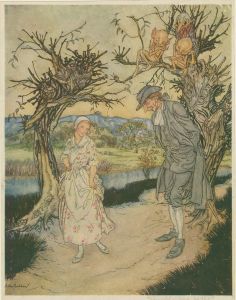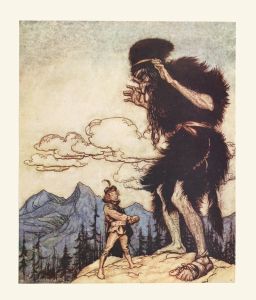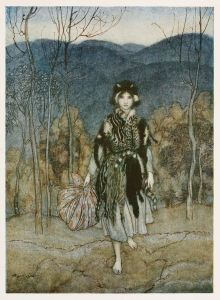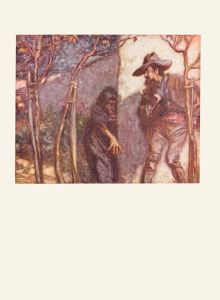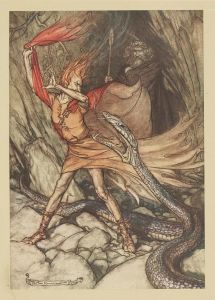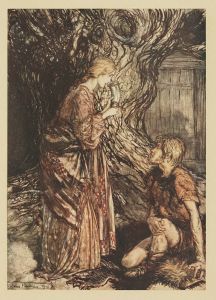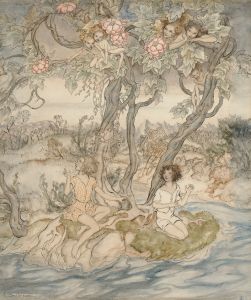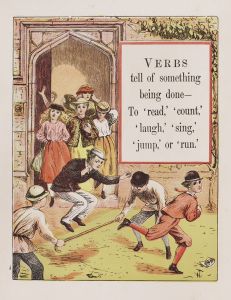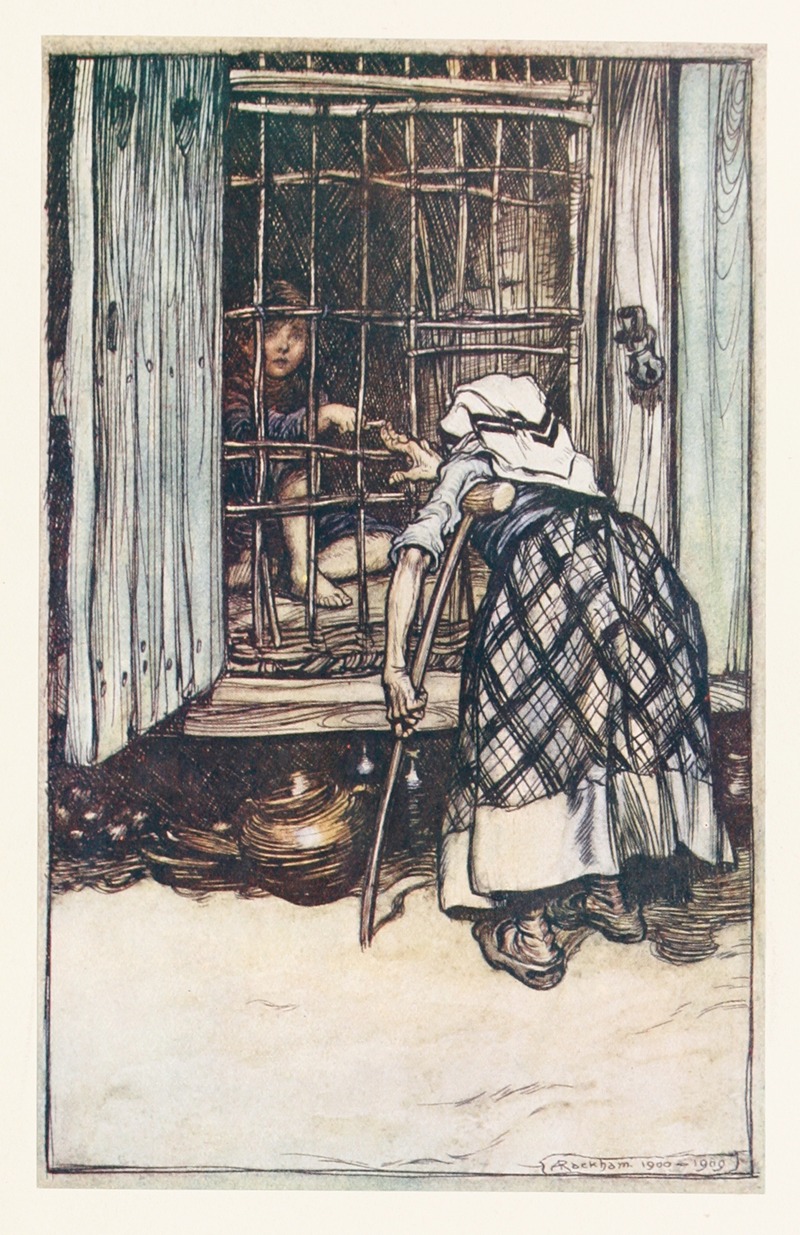
Hansel put out a knuckle-bone, and the old Woman, whose eyes were dim, could not see, and thought it was his finger
A hand-painted replica of Arthur Rackham’s masterpiece Hansel put out a knuckle-bone, and the old Woman, whose eyes were dim, could not see, and thought it was his finger, meticulously crafted by professional artists to capture the true essence of the original. Each piece is created with museum-quality canvas and rare mineral pigments, carefully painted by experienced artists with delicate brushstrokes and rich, layered colors to perfectly recreate the texture of the original artwork. Unlike machine-printed reproductions, this hand-painted version brings the painting to life, infused with the artist’s emotions and skill in every stroke. Whether for personal collection or home decoration, it instantly elevates the artistic atmosphere of any space.
Arthur Rackham (1867–1939) was a prominent English book illustrator known for his distinctive style, which often combined haunting, whimsical, and fantastical elements. His work is characterized by intricate pen and ink drawings, often enhanced with subtle watercolor washes. Rackham's illustrations have become synonymous with classic fairy tales and children's literature, and he is considered one of the leading figures of the Golden Age of British book illustration.
One of Rackham's notable illustrations is "Hansel put out a knuckle-bone, and the old Woman, whose eyes were dim, could not see, and thought it was his finger." This illustration is part of his work for the fairy tale "Hansel and Gretel," which is one of the stories from the Brothers Grimm's collection. Rackham's illustrations for "Hansel and Gretel" were published in the book "Grimm's Fairy Tales," which was first released in 1900. This collection included many of the Grimms' most famous stories, and Rackham's illustrations played a significant role in popularizing these tales in the English-speaking world.
The scene depicted in this particular illustration is a pivotal moment in the story of "Hansel and Gretel." In the tale, Hansel and Gretel are captured by a wicked witch who intends to eat them. The witch keeps Hansel in a cage and feeds him to fatten him up, while Gretel is forced to do chores. The witch, whose eyesight is poor, regularly checks Hansel's finger to see if he is plump enough to eat. Cleverly, Hansel uses a knuckle-bone to trick the witch into thinking he is still too thin. This moment of cunning and survival is captured by Rackham with his characteristic attention to detail and atmospheric style.
Rackham's illustration style often includes elements of the grotesque and the fantastical, which are well-suited to the dark and eerie nature of many fairy tales. His depiction of the witch is typically menacing, with exaggerated features that emphasize her malevolent nature. The use of light and shadow in Rackham's work adds to the suspense and tension of the scene, drawing the viewer into the world of the story.
Arthur Rackham's contributions to the illustration of fairy tales have left a lasting legacy. His work continues to be celebrated for its artistic merit and its ability to capture the imagination of both children and adults. The illustration of Hansel tricking the witch is just one example of how Rackham's art brings the timeless stories of the Brothers Grimm to life, ensuring their place in the cultural canon for generations to come.





